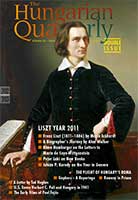The Plight of Hungary’s Roma
The Plight of Hungary’s Roma
Author(s): Péter SzuhaySubject(s): Social Sciences
Published by: Society of the Hungarian Quarterly
Keywords: Gypsy census in Hungary; ethnic enclaves; ethnolinguistic groups; Social stratification:Gypsies; non-Gypsies; Roma culture; The EU strategy of Roma inclusion
Summary/Abstract: In an essay published with the figures of the 1893 Gypsy census, the first in Hungary, the ethnographer Antal Herrmann argued that Gypsies tended to accommodate to the people amongst whom they lived. According to him the figures relating to religion, language and declared ethnic affiliation bore this out. At the time of the census more than half of the Gypsies no longer spoke any Romany. The census showed that Gypsies in Hungary dwelt, first and foremost, in rural areas. Their role in the division of labour placed them with agriculture and the peasant community. 243,000 were permanently settled, over 20,000 stayed in the same locality for extended periods of time, under 9,000 were nomads. That vast majority—more than 168,000—lived in houses: about 91,000 in shanties or shacks and around 4,500 in dug caves, leaving close to 9,000 in tents (for purposes of the census any undivided structure was considered to be a shanty, and any edifice consisting of two or more rooms a house).
Journal: The Hungarian Quarterly
- Issue Year: 2011
- Issue No: 202-203
- Page Range: 86-102
- Page Count: 17
- Language: English

